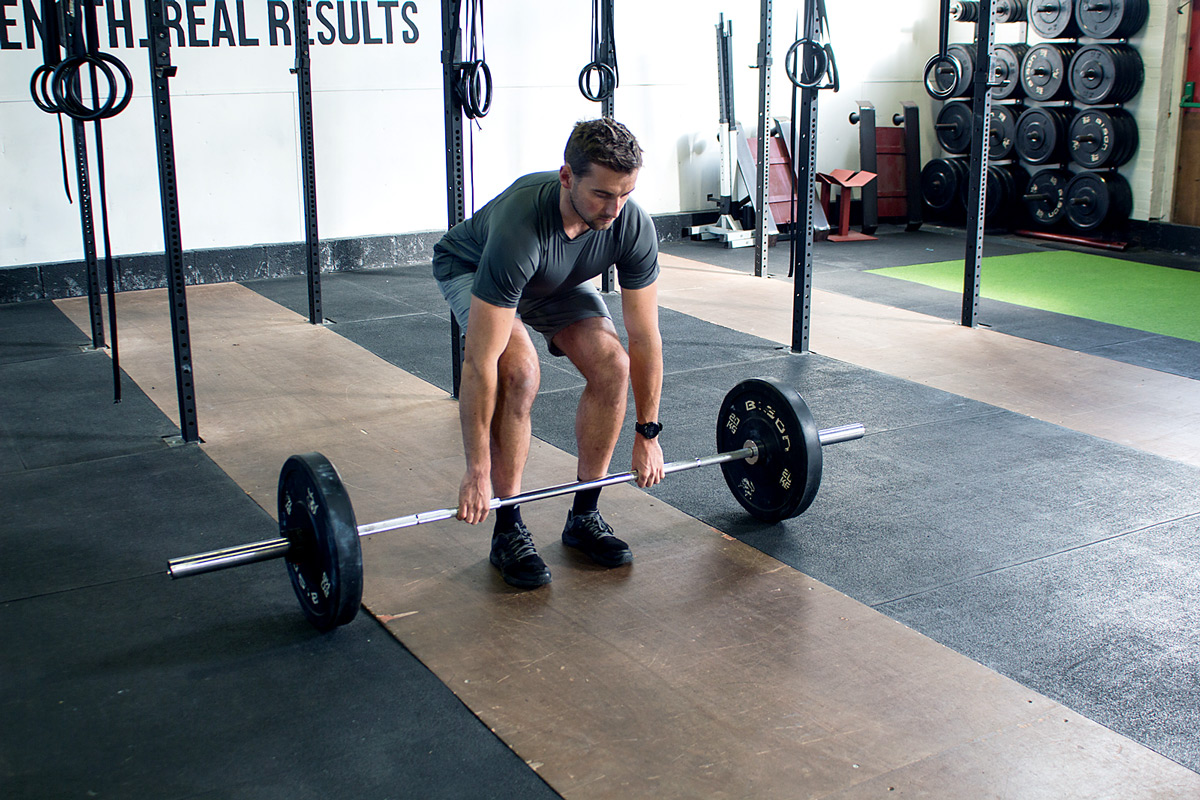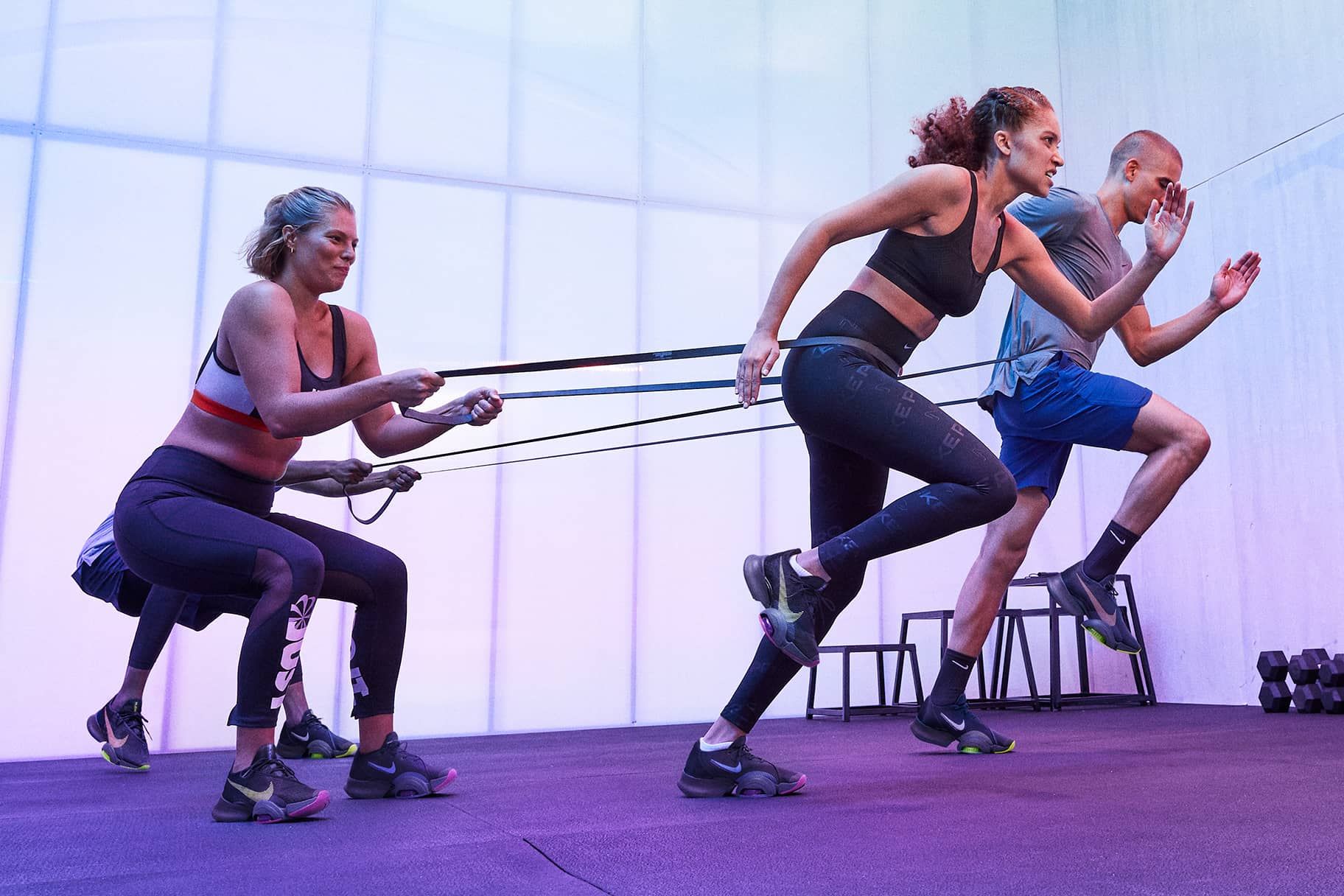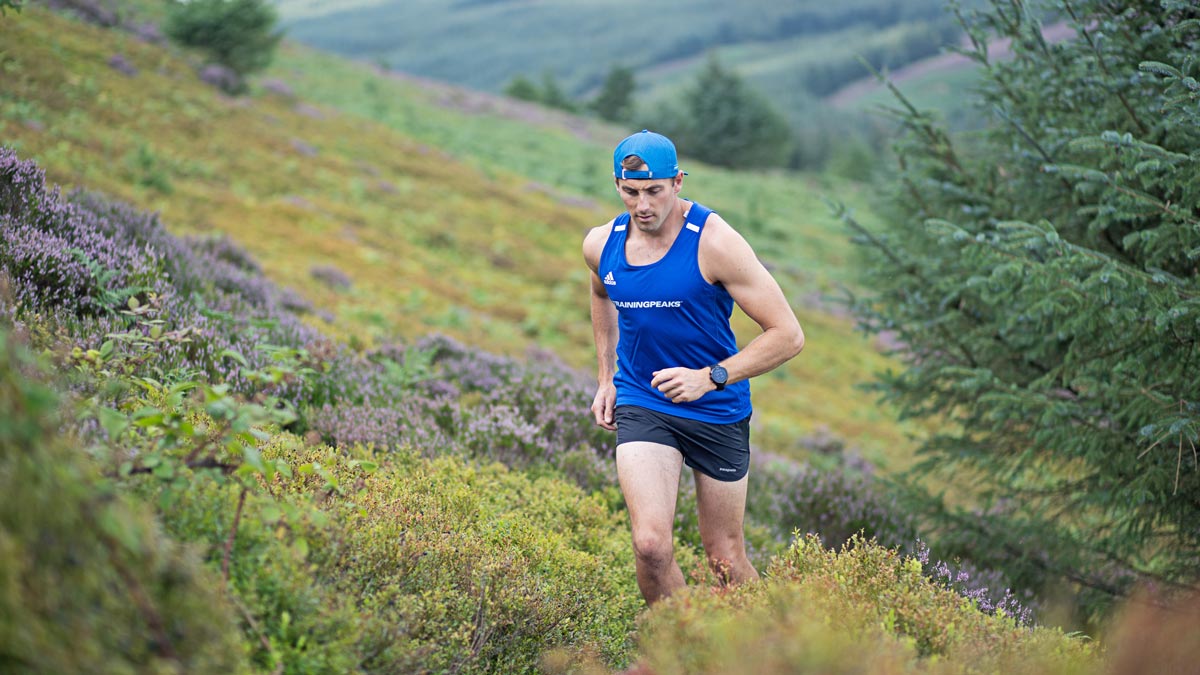Home>Misc>Featured>How To Have A Stronger Kick In Distance Running


Featured
How To Have A Stronger Kick In Distance Running
Modified: January 22, 2024
Improve your distance running with this featured guide on how to develop a stronger kick. Boost your speed and endurance for better race results.
Introduction
When it comes to distance running, having a strong kick can be a game-changer. Whether you’re racing against the clock or competing against others, a powerful kick can give you the extra edge to surge past your competitors and reach the finish line with a burst of speed. But what exactly is a kick in distance running? It refers to the ability to accelerate and maintain speed in the final stages of a race, typically in the form of a sprint. This surge of speed can make all the difference in determining the outcome of a race.
Having a strong kick is not only crucial for winning races but also for setting personal records and achieving your running goals. It allows you to unleash your full potential and push yourself to new limits. A strong kick is a testament to your overall fitness, endurance, and mental strength.
However, developing a powerful kick doesn’t happen overnight. It requires a combination of training, proper form, and mental preparation. In this article, we will explore the various factors that affect kick strength in distance running and discuss techniques and exercises to help you build a stronger kick.
The principles and strategies discussed in this article can be applied to runners of all levels, from beginners to experienced marathoners. Whether you’re aiming to improve your finishing time in a 5K race or looking to break through the wall during a marathon, developing a stronger kick will undoubtedly elevate your distance running game.
Importance of a Strong Kick in Distance Running
A strong kick in distance running is of paramount importance for several reasons. Let’s delve into why having a powerful kick can significantly impact your performance:
1. Sprint to the Finish: As you approach the final stretch of a race, a strong kick enables you to sprint past your competitors and secure a higher finishing position. This burst of speed can be a game-changer, allowing you to overtake runners who may have been leading throughout the race.
2. Race Strategy: A strong kick opens up opportunities for strategic racing. It grants you the ability to strategically conserve energy during the earlier stages of a race, knowing that you can rely on your kick to make crucial moves and catch up with the frontrunners when it matters most.
3. Surpassing Personal Records: When striving to achieve personal records, a strong kick can be the determining factor. By training to develop a powerful finishing sprint, you can shave valuable seconds off your overall race time. Pushing yourself to maintain optimal speed when fatigue sets in is critical for achieving personal bests.
4. Mental Confidence: Knowing that you have a strong kick can provide you with a mental edge during races. It instills confidence, allowing you to push past your perceived physical limitations and tap into the reserves of strength and speed that lie within you, particularly when faced with challenging race conditions or competitive fields.
5. Securing Podium Finishes: A strong kick can make the difference between standing on the podium or narrowly missing out. In highly competitive races, a well-executed kick can help you snatch a top spot, ensuring the recognition and rewards you desire.
Developing a strong kick requires training specific physiological and technical components that contribute to speed and power. In the following sections, we will explore the key factors that affect kick strength in distance running and provide strategies and exercises to help you build a stronger kick. With dedication and consistent practice, you can maximize your kick potential and take your distance running to new heights, bringing you closer to your running goals.
Factors Affecting Kick Strength in Distance Running
Several factors contribute to the development and improvement of kick strength in distance running. Understanding these factors will help you identify areas for improvement and optimize your training. Here are some key factors to consider:
1. Muscular Endurance: Strong and enduring leg muscles are essential for a powerful kick. Building muscular endurance helps maintain optimal performance during the final stretch of a race when fatigue sets in. Exercises that focus on strengthening the quadriceps, hamstrings, calves, and glutes can enhance your kick strength.
2. Speed Development: A faster overall pace during a race translates to a stronger kick. Developing your top-end speed through interval training, speed workouts, and sprint training helps improve your ability to generate more power and speed during the final sprint.
3. Form and Technique: Proper running form and technique play a crucial role in kick strength. Maintaining an efficient stride, with a slightly forward lean and driving your knees and arms forward, helps propel you forward more efficiently and effectively during the kick phase.
4. Mental Preparation: Mental strength and focus are vital for maintaining a strong kick during races. Training your mind to embrace discomfort, stay disciplined, and stay positive during challenging moments will help you tap into your fullest potential when it matters most.
5. Race Strategy: Timing your kick strategically can make a significant difference in the outcome of a race. Practicing race scenarios and knowing when to start your final sprint can help you maximize your kick potency and overtake competitors at the right moment.
6. Aerobic Fitness: While a kick primarily relies on anaerobic energy systems, having a solid aerobic base enhances your overall fitness and endurance. Improved cardiovascular capacity allows you to sustain a faster pace throughout the race, providing a stronger foundation for your kick.
7. Flexibility and Range of Motion: Maintaining good flexibility and range of motion in your joints and muscles is crucial for generating power during the kick. Regular stretching exercises targeting your hip flexors, glutes, hamstrings, and calves can improve your range of motion and allow for a more explosive kick.
By analyzing and addressing these factors in your training regimen, you can effectively enhance your kick strength. In the following sections, we will explore techniques and exercises specifically designed to help you build a stronger kick in distance running.
Techniques for Building a Stronger Kick in Distance Running
Building a stronger kick in distance running requires a combination of specific techniques and training methods. Incorporating these techniques into your regular training routine can help you develop the power, speed, and endurance needed to unleash a strong finishing kick. Here are some key techniques to consider:
1. Interval Training: Incorporate interval training sessions into your training plan. This involves alternating between periods of high-intensity sprints and recovery periods. Intervals improve your anaerobic capacity and train your body to maintain a fast pace, setting the stage for a stronger kick.
2. Fartlek Runs: Fartlek runs, also known as speed play, involve alternating between slower and faster segments during your run. This type of training mimics the varied pace changes you may encounter during a race and helps condition your body to adapt to different intensities, ultimately improving your kick strength.
3. Hill Repeats: Hill repeats are an excellent way to build strength and power in your lower body. Find a challenging hill and run up it at a high intensity, then recover on the way down. Repeat this several times during your training sessions to develop leg strength and resistance to fatigue, which will benefit your kick.
4. Stride Workouts: Incorporating stride workouts into your training routine can help improve your running form and increase your turnover. During stride workouts, gradually increase your speed in short bursts, focusing on maintaining good running form and a quick turnover rate. This will improve your neuromuscular coordination and enhance your ability to generate power during your kick.
5. Tempo Runs: Tempo runs involve running at a comfortably hard pace, just below your anaerobic threshold. These runs help build your lactate threshold and increase your overall speed, enabling you to maintain a faster pace for longer periods and set the stage for a strong finishing kick.
6. Mental Focus and Visualization: Train your mind to stay focused and positive during challenging moments in a race. Visualize yourself executing a strong kick, overtaking your competitors, and crossing the finish line with determination and power. Mental preparation can significantly impact your kick strength and overall performance.
Remember to gradually incorporate these techniques into your training regimen and listen to your body to prevent overtraining. Building a stronger kick takes time and consistency, so be patient with the process. In the next sections, we will explore specific exercises that target different aspects of kick strength, from flexibility to core stability, to further enhance your performance in distance running.
Stretching and Warm-up Exercises for Improving Kick Strength
Stretching and warm-up exercises play a crucial role in preparing your body for a strong kick in distance running. Proper warm-up routines improve blood flow, increase muscle activation, and enhance range of motion, all of which contribute to improved kick strength. Here are some stretching and warm-up exercises to incorporate into your training:
1. Dynamic Warm-Up: Start your warm-up with dynamic exercises that engage your entire body and mimic the movements you’ll be making during your run. Examples include jogging in place, high knees, butt kicks, leg swings, and walking lunges. A dynamic warm-up helps increase blood flow to the muscles and prepares them for the demands of running.
2. Walking Lunges: Walking lunges target your glutes, quadriceps, and hamstrings, enhancing your leg strength and flexibility. Take a step forward with your right leg and lower your body until your right thigh is parallel to the ground. Push off with your left foot and repeat with the left leg. Perform a set of walking lunges, gradually increasing the distance covered.
3. Hip Flexor Stretch: Tight hip flexor muscles can limit your range of motion and hinder your kick strength. Kneel on one knee and extend the other leg forward, keeping your back straight. Slowly push your hips forward while keeping your torso upright until you feel a stretch in the front of your hip. Hold for 20-30 seconds, then switch sides.
4. Hamstring Stretch: Lie on your back and bend one knee. Using a towel or resistance band, wrap it around the bottom of your foot and gently straighten your leg while keeping your back flat on the ground. Feel the stretch in your hamstring and hold for 20-30 seconds. Repeat on the other leg.
5. Calf Stretch: Stand facing a wall with one foot in front of the other. Place your hands on the wall for support and bend your front knee while keeping your back leg straight. Lean forward slightly, feeling a stretch in your calf muscle. Hold for 20-30 seconds and switch sides.
6. Quad Stretch: Stand tall and hold onto a wall or a stable object for balance. Bend one leg and grab your ankle, gently pulling it towards your buttocks until you feel a stretch in your quadriceps. Hold for 20-30 seconds and switch sides.
Remember to perform these stretches and warm-up exercises before every run to prepare your body for the demands of distance running. They will help improve your flexibility, range of motion, and muscle activation, leading to a stronger kick. In the next sections, we will explore strength training exercises, plyometric workouts, and core stability exercises to further enhance your kick strength and performance in distance running.
Strength Training Exercises for a Stronger Kick in Distance Running
Strength training is a valuable addition to any distance runner’s training program, especially when it comes to developing a stronger kick. Incorporating specific exercises that target the muscles involved in your kick can improve power, endurance, and overall running performance. Here are some key strength training exercises to enhance your kick strength in distance running:
1. Squats: Squats are a compound exercise that targets your quadriceps, hamstrings, glutes, and core muscles. Start with your feet shoulder-width apart, lower your body as if sitting back into a chair, then press through your heels to return to a standing position. Perform 2-3 sets of 10-12 reps to build lower body strength necessary for a powerful kick.
2. Lunges: Lunges are an effective exercise for strengthening your quadriceps, hamstrings, glutes, and hip stabilizers. Step forward with one leg and lower your body until both knees are at 90-degree angles. Push back up through your front heel to return to a standing position. Repeat with the opposite leg. Aim to perform 2-3 sets of 10-12 lunges on each leg.
3. Single-Leg Deadlifts: Single-leg deadlifts target your hamstrings, glutes, and core muscles, helping to improve balance, stability, and kick power. Stand on one leg with a slight bend in the knee. Keeping your back straight, hinge at the hips and lower your upper body while extending your opposite leg behind you. Pause when your torso and leg are parallel to the ground, then return to the starting position. Complete 2-3 sets of 10-12 reps on each leg.
4. Step-Ups: Step-ups work your quadriceps, hamstrings, and glutes, improving leg strength and power for a stronger kick. Find a stable elevated surface or use a step bench. Step onto the surface with one leg, lift your body up, and bring the opposite knee forward. Step back down and repeat on the other leg. Perform 2-3 sets of 10-12 step-ups on each leg.
5. Calf Raises: Calf raises target your calf muscles, which play a crucial role in generating power during your kick. Stand with your feet hip-width apart and raise your heels off the ground as high as you can, pause for a second, then lower them back down. Perform 2-3 sets of 15-20 calf raises to strengthen your calf muscles.
Incorporate these strength training exercises into your routine 2-3 times per week, focusing on maintaining proper form and gradually increasing the intensity or resistance over time. Remember that strength training should complement your running program and not replace it. By building strength in the muscles involved in your kick, you’ll be able to generate more power during your final sprint and improve your overall distance running performance. In the following sections, we will explore plyometric exercises and core stability exercises to further enhance your kick strength.
Plyometric Exercises for Increasing Kick Power
Plyometric exercises are a valuable training tool for increasing kick power in distance running. These explosive movements target the fast-twitch muscle fibers and improve the body’s ability to generate force quickly. By incorporating plyometric exercises into your training routine, you can enhance your kick strength and overall running performance. Here are some plyometric exercises to consider:
1. Box Jumps: Box jumps are a classic plyometric exercise that develops explosive power in your lower body. Start with a sturdy box or platform in front of you. Stand with your feet shoulder-width apart, then bend your knees and swing your arms back. Explosively jump onto the box, using your arms to propel yourself upward. Step back down and repeat for a set of 8-10 jumps. Gradually increase the height of the box as you progress.
2. Jump Squats: Jump squats are a dynamic exercise that targets your leg muscles, including your quadriceps and glutes. Start with your feet shoulder-width apart and lower your body into a squat position. Explosively jump up, extending your legs fully, and reaching for the ceiling with your hands. Land softly back into a squat and repeat for a set of 10-12 reps.
3. Bounds: Bounds are a powerful exercise for increasing stride length and developing explosive leg power. Start by taking long, exaggerated strides, pushing off forcefully with each step. Drive your knees high, extend your legs fully, and maintain a strong arm swing. Perform 50-100 meters of bounding, focusing on quality and explosiveness.
4. Lateral Bounds: Lateral bounds improve lateral power, stability, and agility. Stand with your feet shoulder-width apart and jump laterally to the right, landing softly on your right foot. Immediately bound back to the left, using your left foot as the landing foot. Repeat for a set of 8-10 lateral bounds on each side.
5. Depth Jumps: Depth jumps are an advanced plyometric exercise that enhances explosiveness and strength in the lower body. Stand on top of a box or platform, step off, and as soon as your feet touch the ground, explode upward into a vertical jump. Land softly and repeat for 6-8 jumps. Depth jumps should be performed with caution and under proper supervision due to the high impact involved.
It’s crucial to perform plyometric exercises on a soft surface or with proper padding to minimize the impact on your joints. Start with low-intensity variations and gradually progress to more advanced exercises as your strength and technique improve. Additionally, always ensure proper rest and recovery between plyometric sessions to allow the muscles to adapt and prevent overuse injuries.
Incorporating plyometric exercises into your training routine 1-2 times per week can help improve your power output and enhance your kick strength for distance running. In the next section, we will explore core stability exercises, which are crucial for maintaining proper form and generating power during your kick.
Core Stability Exercises for Enhancing Kick Strength
Building core stability is essential for enhancing kick strength in distance running. A strong and stable core provides a solid foundation, improves running form, and helps generate power during your kick. By incorporating core stability exercises into your training routine, you can enhance your kick strength and improve your overall running performance. Here are some core stability exercises to consider:
1. Plank: The plank is a fundamental exercise that targets the entire core, including your abdominal muscles, lower back, and glutes. Start by getting into a push-up position with your forearms on the ground, elbows directly beneath your shoulders. Engage your core, keep your body in a straight line, and hold the position for 30 seconds to a minute. Gradually increase the duration as your core strength improves.
2. Russian Twists: Russian twists target your obliques, which play a crucial role in stabilizing and rotating your core. Sit on the ground with your knees bent and feet lifted off the floor. Lean back slightly, engage your core, and twist your torso to the right, touching the ground beside you with your hand. Return to the starting position and twist to the left. Complete 10-12 twists on each side.
3. Bicycle Crunches: Bicycle crunches work your rectus abdominis, obliques, and hip flexors, improving core strength and stability. Lie on your back with your hands behind your head and bring your knees towards your chest. Lift your head, shoulders, and upper back off the ground and simultaneously twist your torso, bringing your right elbow towards your left knee while extending the right leg. Repeat on the other side. Aim for 10-12 reps on each side.
4. Dead Bugs: Dead bugs target your deep core muscles, improving stability and coordination. Lie on your back with your arms extended towards the ceiling and your knees bent at a 90-degree angle. Keeping your lower back pressed into the ground, slowly extend your right arm overhead while simultaneously straightening your left leg towards the ground. Return to the starting position and repeat on the other side. Perform 10-12 reps on each side.
5. Side Plank: Side planks target the obliques and hip stabilizers, improving lateral core stability. Start by lying on your side with your forearm on the ground, elbow beneath your shoulder, and legs extended. Lift your hips off the ground, forming a straight line from your head to your feet. Hold the position for 30 seconds to a minute on each side.
Incorporate these core stability exercises into your routine 2-3 times per week, focusing on proper form and activation of the core muscles. Remember to breathe evenly and engage your core throughout each exercise. As your core strength improves, you’ll experience increased stability, better running form, and improved kick power in distance running. In the final section, we will discuss strategies for maintaining and utilizing a strong kick during races.
Strategies for Maintaining and Utilizing a Strong Kick During Races
Having a strong kick in distance running is not just about building the physical capabilities but also about employing effective strategies during races to maximize your kick potential. Here are some key strategies to help you maintain and utilize a strong kick during races:
1. Stay Consistent with Pacing: Throughout the race, maintain a consistent pace, making sure not to exhaust all your energy early on. This strategy helps conserve energy that can be utilized during the final stages of the race when you need to unleash your kick. Avoid sudden surges or significant changes in pace that can drain your energy reserves prematurely.
2. Monitor Race Conditions: Be aware of the race conditions, such as weather, course elevation, and competition. These factors can affect your kick strategy. Adjust your pacing and kick timing accordingly, considering strong headwinds, uphill sections, or the presence of other fast finishers. Adapting your strategy to the conditions allows you to optimize your kick performance.
3. Visualize Your Kick in Training: During training runs, visualize the moments when you will need to apply your strong kick. Picture yourself overtaking competitors or surging ahead in the final stretch. This mental preparation helps build confidence and mentally primes you to execute a powerful kick during races.
4. Proper Timing of the Kick: Knowing when to engage your kick is crucial. Avoid starting your kick too early, as it may lead to premature fatigue before the finish line. Assess your energy levels, remaining distance, and the positions of other runners before initiating your kick. Aim to unleash your full potential during the final 200-400 meters of the race, maintaining form, and giving it your all.
5. Mental Resilience: Running a strong kick requires mental strength and resilience. Embrace discomfort and push through fatigue during the final stages of the race. Stay focused, positive, and determined, using the mental toughness you’ve honed in your training. Visualize your finish line goal and remind yourself of your hard work and dedication, fueling your determination to give your best effort.
6. Race-Specific Kick Training: Incorporate race-specific kick training sessions into your training program. Simulate race scenarios during your interval workouts, tempos, or timed runs. Practice executing your kick under similar conditions you’ll encounter during races, such as the distance remaining or the expected competition. This specific training reinforces your ability to unleash a strong kick when it matters most.
By applying these strategies, you can effectively maintain and utilize a strong kick during races. Combine your physical training with mental preparation, race awareness, and tactical execution to optimize your performance. Remember that consistent practice and experience will further refine your kick strategy, enabling you to continuously improve your kick strength and achieve your distance running goals.
Conclusion
Developing a stronger kick in distance running can significantly elevate your performance and help you achieve your running goals. By focusing on aspects such as muscular endurance, speed development, form and technique, mental preparation, race strategy, aerobic fitness, flexibility, and core stability, you can enhance your kick strength and overall running capabilities.
Remember to incorporate a variety of training techniques into your routine, including interval training, fartlek runs, hill repeats, tempo runs, and stride workouts, to improve your speed and power. Additionally, make sure to include stretching and warm-up exercises to prepare your body for the demands of running and reduce the risk of injuries.
Strength training, including exercises such as squats, lunges, single-leg deadlifts, and step-ups, will help develop the muscle strength necessary for an explosive kick. Plyometric exercises like box jumps, jump squats, bounds, and depth jumps are effective ways to enhance power and improve stride length. Don’t forget to prioritize core stability exercises such as planks, Russian twists, and bicycle crunches to strengthen your core and maintain proper form during your kick.
During races, employ strategies such as consistent pacing, monitoring race conditions, visualizing your kick, proper timing of the kick, mental resilience, and race-specific kick training. By implementing these strategies, you can maximize your kick potential and utilize it strategically to surge past your competitors and achieve peak performance.
In summary, building a stronger kick in distance running requires a holistic approach. It involves not only physical training but also mental preparation, race strategy, and leveraging the power of proper form and technique. Through consistent practice, dedication, and a focus on continual improvement, you can develop a formidable kick that will propel you to new heights in your distance running journey. So lace up your shoes, hit the road, and unleash your powerful kick as you conquer the distance with determination and speed. Success awaits!









